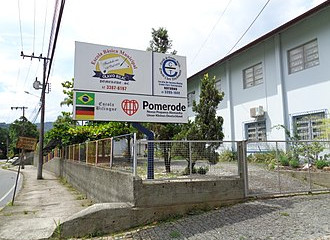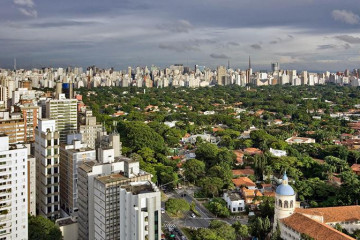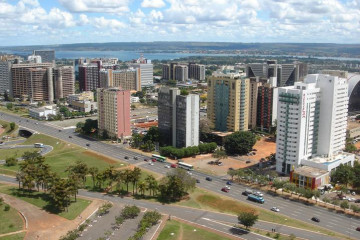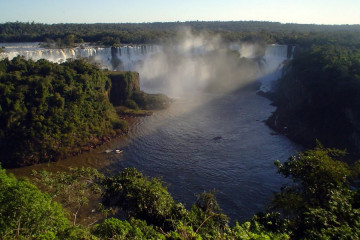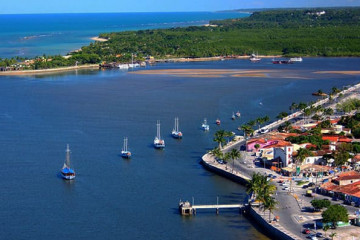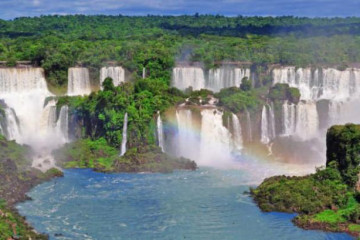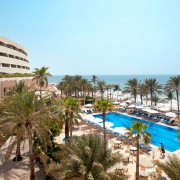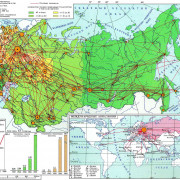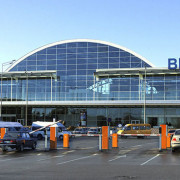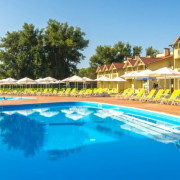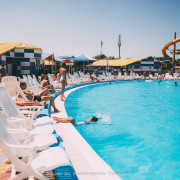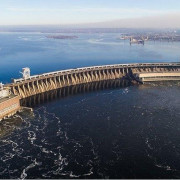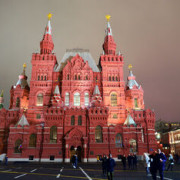Достопримечательности бразилии: топ-30
Содержание:
- Аренда авто в Бразилии
- Administrative divisions
- Fun facts about Brazil laws
- Развлечения и достопримечательности Бразилии
- World Heritage site
- Points of interest
- Facts about Brazilian culture
- Общая информация о Бразилии
- Brazilian statistics
- Климат Бразилии
- Social data
- External links
- References
- Brazil number ones
- Fun facts about Brazil
- Government and politics
- Краткая история
- Interesting facts Brazil symbols
- Климат
Аренда авто в Бразилии
Для аренды автомобиля необходимо наличие международных водительских прав и кредитной карты. Пункты проката находятся, как правило, около крупных гостиниц и в аэропортах (работают они обычно с 9:00 до 16:00, а в аэропортах — круглосуточно). При аренде автомобиля оформляется страховка из расчета примерно 10-13 USD в день, а также взимается денежный залог (при наличии кредитной карты он не требуется). Местные фирмы обычно берут арендную плату в среднем на 10 % меньше, чем международные, но машины у них, как правило, постарше, и не всегда можно возвратить автомобиль в другом городе. Выезжать за пределы Бразилии на арендованном автомобиле запрещено.
Самая низкая цена аренды авто в местоположении Бразилиа аэропорт.
Мы просмотрели предложения от ВЕДУЩИХ компаний и хотим предложить вам отличные варианты аренды.
от
RUB 1809
в день

Смотреть больше
Administrative divisions
Politically, Brazil is a federation of twenty-six states and one federal district.
The national territory was divided in 1969, into five main regions: North, Northeast, Central-West, Southeast, and South.
The North covers 45.27 percent of the surface of Brazil and has the lowest number of inhabitants. With the exception of Manaus, which hosts a tax-free industrial zone, and Belém, the biggest metropolitan area of the region, it is fairly unindustrialized and undeveloped. It accommodates most of the rainforest vegetation of the world and many indigenous tribes.
The Northeast, inhabited by about 30 percent of Brazil’s population, is culturally diverse, with roots set in the Portuguese colonial period and in Amerindian and Afro-Brazilian elements. It is also the poorest region of Brazil and suffers from long periods of dry climate. The largest cities are Salvador, Recife, and Fortaleza.
The Central-West region has low demographic density when compared to the other regions, mostly because part of its territory is covered by the world’s largest marshlands area, the Pantanal, as well as a small part of the Amazon rainforest in the northwest. Much of the region is covered by Cerrado, the largest savanna in the world. The Central-West region contributes significantly toward agriculture. The largest cities of this region are: Brasília (the capital), Goiânia, Campo Grande, Cuiabá, Anápolis, Dourados, Rondonópolis, and Corumbá.
The Southeast region is the richest and most densely populated. It has more inhabitants than any other South American country and hosts one of the largest megalopolises of the world. The main cities are the country’s two largest: São Paulo and Rio de Janeiro. The region is very diverse, including the major business center of São Paulo, the historical cities of Minas Gerais and its capital Belo Horizonte, the beaches of Rio de Janeiro, and the coast of Espírito Santo.
The South is the wealthiest by GDP per capita and has the highest standard of living in the country. It is also the coldest region of Brazil, with occasional occurrences of frost and snow in some of the higher altitude areas. It has been settled by European immigrants, mainly of Italian, German, Portuguese, and Slavic ancestry, and has clearly been influenced by these cultures. The largest cities in this region are Curitiba, Porto Alegre, Florianópolis, Londrina, Caxias do Sul, and Joinville.
Fun facts about Brazil laws
The flag should always be up-to-date
As said before, the starry night on the Brazilian flag depicts the night on November 15, 1889, the Proclamation of the Republic, and these stars aren’t random.
Each one of them represents a Brazilian state as well as the country’s capital in a specific constellation.
And another Brazil fun fact is that the law imposes the flag should always be up-to-date. That means if a Brazilian state is created or abolished, the stars on the flag should reflect that.
No one can get arrested on the days before an election
Well, almost no one. But this rather absurd Brazilian law that imposes authorities may not arrest or detain any voter starting five days before elections up to 48 hours after the election closing.
The only exceptions to that, so the only cases when a voter can get arrested is when the person is caught in committing a crime or if the person committed one of the following crimes instead:
- Torture
- Drug dealing
- Racism
- Heinous crimes
- Any offense against the state
It’s bizarre, I know. But the reason for this law is that the government wants to avoid unfair arrests caused by opposing parties that might try to frame other people and influence the election results.
Committing an environmental crime on Sundays and holidays is an aggravating factor
It’s common and right to punish crimes against the environment. But the weird fact about Brazil is that committing this kind of crime on Sundays, holidays, or during the night is an aggravating factor.
That’s because inspectors don’t work during those hours and days, and the government wants to discourage people from committing crimes during the period the inspectors don’t work, increasing the chance of getting infractors.
Развлечения и достопримечательности Бразилии
Сан-Паулу — крупнейший промышленный центр не только Бразилии, но и всей Латинской Америки. Там интересны Музей современного искусства, стадион «Пакаембу», где часто выступал «король футбола» Пеле, а также змеиный заповедник «Бутантан».
Достопримечательности города Манаус, столицы штата Амазония: Музей индейцев, городской театр (1896 г.), колоссальный дворец Паласиу-Негру, церковь Сан-Себастьян, Музей человека, Музей нумизматики, оперный театр «Театро-Амазонас», многочисленные плавучие рынки, а также множество великолепных домов, украшенных голубой керамикой «азулежуш». В 12 км от Манауса наблюдается уникальное природное явление — слияние рек Солимоэс и Риу-Негру, чьи воды совершенно не смешиваются между собой из-за разной плотности, а так и текут рядом разноцветными лентами сотню километров.
Водопады Игуасу — настоящее чудо света, они расположены в национальном парке «Игуасу» в месте встречи рек Парана и Игуасу, на границе между Бразилией, Аргентиной и Парагваем, и представляют собой впечатляющее зрелище низвергающихся с высоты 72 м каскадов воды шириной до 3 км. Шум водопада слышен за многие километры, а огромные вихри брызг создают радугу необычайной красоты. Чуть менее известен и водопад Гуайра (или Сети-Кедас) на Паране.
В каждом бразильском городе есть хотя бы один футбольный стадион. Бразилия — абсолютный рекордсмен по количеству стадионов в мире.
Ресифи, столица штата Пернамбуку, находится в 835 км севернее Салвадора. Этот город часто сравнивают с Венецией. В 7 км от Ресифи расположен город Олинда, один из наиболее хорошо сохранившихся колониальных городов Бразилии, знаменитый своим старым кварталом, находящимся под охраной ЮНЕСКО.
Белу-Оризонти — первый город страны, который был создан «с чистого листа», проложив тем самым дорогу современной столице. Здесь интересны исторический музей Абилио-Барето, Дворец Свободы и религиозный центр Конгоньяс-ду-Кампу в 80 км от города со знаменитой «крестовой дорогой» из 78 статуй.
- Бразилия: самостоятельно или с туроператором?
- Как в Бразилии заказать дополнительные экскурсии
- Где в Бразилии самые лучшие пляжи
World Heritage site
The Brazilian capital is the only city in the world built in the twentieth century to be awarded by UNESCO, a United Nations agency since 1987, the status of being a World Heritage Site.
In order to be considered for World Heritage status, a site must fulfill one of ten standards for qualification. Brasilia fulfilled two:
- to represent a masterpiece of human creative genius
- to be an outstanding example of a type of building, architectural or technological ensemble or landscape which illustrates (a) significant stage(s) in human history
Created from nothing in the center of the country Brasilia is a landmark in the history of town planning, from the layout of the residential and administrative districts to the symmetry of the buildings themselves, which are designed to harmonize with the city’s overall design. The official buildings, in particular, are innovative and imaginative.
Points of interest
Brasilia hosts a varied assortment of art works from great artists like Bruno Giorgi, Alfredo Ceschiatti, Athos Bulcão, Marienne Peretti, Volpi, Di Cavalcanti, Victor Brecheret, and Burle Marx, whose works have been integrated into the city’s architecture, making it a unique landscape.
A scene for political events, music performances, and movie festivals, Brasília is a cosmopolitan city, with around 90 embassies, a wide range of restaurants, and complete infrastructure ready to host any kind of event. The city is a growing business and tourism destination that is a rising segment of the local economy, including dozens of hotels spread around the national capital.
Cultural Complex of the Republic
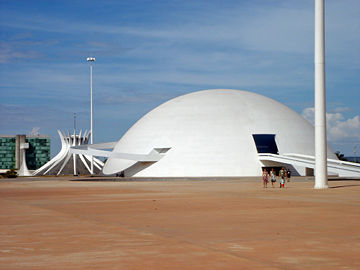
National Museum, Brasília, D.F. 2007
The Cultural Complex of the Republic («Complexo Cultural da República» in Portuguese) is a cultural center located along the Monumental Axis in Brasília. It consists of the National Library of Brasília and the National Museum of the Republic.
The National Library of Brasília (Biblioteca Nacional de Brasília in Portuguese) occupies an area of 16,744 square yards, consisting of reading and study rooms, an auditorium and a collection of over 300,000 items.
The National Museum of the Republic (Museu Nacional da República in Portuguese) consists of a 17,341 square-yard exhibit area, two 780-seat auditoriums and a laboratory. The space is mainly used to display temporary art exhibits.
Paranoá Lake
Paranoá Lake is a giant artificial lake built in order to increase the amount of water available to the region. It holds the second largest marina in Brazil and is home to the capital’s wakeboard and windsurf practitioners.
Juscelino Kubitschek bridge
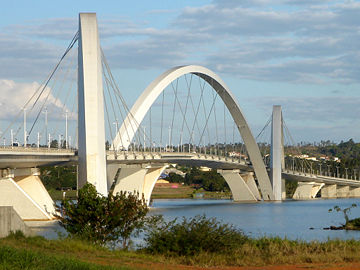
Bridge Juscelino Kubitschek (Ponte JK), over Lake Paranoa, Brasília, D.F. 2006
The Juscelino Kubitschek bridge, also known as the «President JK Bridge» or the «JK Bridge,» crosses Lake Paranoá. It is named for Juscelino Kubitschek de Oliveira, the former president of Brazil. It was designed by architect Alexandre Chan and structural engineer Mário Vila Verde.
The bridge consists of three, 200-foot-tall asymmetrical steel arches that crisscross diagonally. It is three-quarters of a mile long and was completed in 2002 at a cost of $56.8 million. It has a pedestrian walkway and is accessible to bicyclists and skaters.
Cathedral of Brasília
The Cathedral of Brasília is an aesthetic expression of the architect Oscar Niemeyer. On May 31, 1970, the glass-roofed cathedral was finished with only the 230-foot diameter of the circular area visible. This concrete-framed structure is a result of 16 identical assembled concrete columns, having hyperbolic sections and weighing 90 tons, representing two hands moving upwards to heaven.
Cultural events
Traditional parties take place throughout the year. In June, there are large festivals celebrating Catholic saints, such as Saint Anthony and Saint Peter. Throughout the year there are local, national, and international events spread through the city. Christmas is widely celebrated and New Year’s Eve usually hosts major events.
The Brasília Cultural Foundation sponsors many national meetings in the arts and letters, and several foreign information centers are available. The National Theater features dramatic, symphonic, and operatic works. Historical institutions include the Museum of Brasília, with a historical record of Brasília’s creation; the Federal Reserve Museum; and the Image and Sound Museum of the Institute of History and Geography.
Brasília is home to two major soccer teams: Brasiliense Futebol Clube and Sociedade Esportiva do Gama. The main football stadiums are the Estádio Mané Garrincha and the Serejão.
Facts about Brazilian culture
These are some facts about our customs and traditions, but to get a better sense of our society, read this guide on Brazilian culture.
The color we wear on New Year’s Eve isn’t random
We Brazilians have many quirky and unusual traditions.
Still, my favorite of them all is that we choose a specific color to wear on New Year in Brazil based on our wishes for the upcoming year.
Each color has a different meaning, so most people use a combination of white (for peace) with red (for love) or gold (for money), and so on.
I know this is a fun fact about Brazil, or better put, Brazilians. If you visit the country during that time, you’ll experience it yourself.

Most popular last name in Brazil is Silva
This Brazil fact is also shared with Portugal as the last name Silva is the most common there too.
The variation “da Silva” is in 22nd place, with just over 1 million people in Brazil. But the origin of both “Silva” and “da Silva” are the same: as a toponymic surname (named after a place), it derives from the Latin term silva, which means “jungle” or “forest.”
With the presence of the Romans in the Iberian Peninsula, many Lusitanians incorporated Silva in their own name.
Centuries later, many of them brought the name to Brazil during colonial times, and it became an even larger group after the abolition of slavery.
Brazilians are highly sexually active
It isn’t a surprising fact about Brazil, a country known for its beautiful people, that the population is the world’s second-most sexually active.
Take a stroll in any beach to see many people working out and just sunbathing their trained bodies.
As people who love music, I believe the “warm” beats and lyrics of Brazilian music also play a significant role while flirting.
Общая информация о Бразилии
Официальное название: Федеративная Республика Бразилия
Столица: Бразилиа
Площадь территории: 8 547,4 тыс. кв. км
Общее население: 201,1 млн. чел.
Административное деление: Государство разделено на 23 штата, один столичный округ и 3 федеральных территории.
Форма правления: Республика, с федеративным государственным устройством.
Глава государства: Президент, избираемый на 5 лет.
Состав населения: Этнические группы: белые — 53.9 %(португальцы — 20 %; итальянцы — 14 %; испанцы — 8 %; немцы — 6,6 %; арабы — 5,3 %); мулаты — 38,5 %; чёрные — 6,2 %; азиаты — 0,5 % ( японцы и пр.); индейцы — 0,43 % (тупи-гуарани, же, араваки, карибы, пано и др.).
Так же есть самбо (афро-индейцы) и пардо (коричневые) — их количество точно не известно.
Государственный язык: португальский. Также используются испанский, немецкий, итальянский, японский , украинский , английский и индейские языки.
Религия: 73,6% — католики, 15,4% — протестанты, 1,3% — спиритуалисты, 0,3% — банту/вуду, 7,4% — атеисты, 2% — другие.
Интернет-домен: .br
Напряжение в электросети: ~127 В/220 В, 60 Гц
Телефонный код страны: +55
Штрих-код страны: 789-790
Brazilian statistics
Brazil has about 180 spoken languages
Yes, at least 180 languages. Although Portuguese is the official one, the other languages are spoken mostly by about 160,000 indigenous people.
However, according to the linguist Aryon Rodrigues from the National University of Brasilia (UnB), these languages are treated with extinction since fewer than 10,000 people currently speak them.
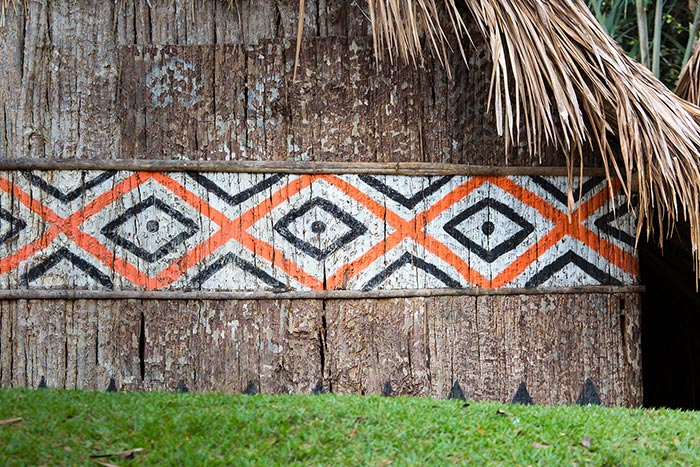
Brazil receives half the number of tourists Berlin does
While Brazil is a large country, there is still a lot to do in terms of increasing awareness about the country and attracting international tourists.
To put it into perspective, Brazil received 6.6 million tourists in 2018, while Berlin received 13.5 million in the same period.
Yes, a capital in Europe receives more tourists than a country with continental proportions.
It’s undeniable that criminality is an issue that the government isn’t very interested in solving. However, when taking necessary precautions and staying in the tourist routes, it’s improbable something will happen to visitors.
Brazil has the largest Japanese community outside of Japan
In 1908, the first Japanese immigrants arrived in Brazil, and since then, it has developed into the most significant ethnic Japanese population outside of their home country.
This is a pretty cool fact about Brazil, considering both cultures are very different from each other.
Nowadays, about 1.5 million Brazilian Japanese live in Brazil.
São Paulo has the highest GDP in the southern hemisphere
Brazil is a country of extremes, and this fact about Brazil only proves my point.
While millions of people in Brazil fight against extreme poverty, São Paulo is among the most important financial and industrial centers in the world and has the highest GDP in the southern hemisphere, let alone Latin America.
Many countries on other continents, including in Europe, have smaller economies than this huge South American city.
São Paulo dictates the pulse of the Brazilian economy as it accounts for over 30% of the country’s GDP.
The city’s GDP was about $530 billion in , while the GDP of Mexico City was about $490 billion in the same period.
Климат Бразилии
Климат в стране — типичный для тропических стран, сильно различается в разных местностях: от экваториального до субтропического. На побережье Бразилии можно ездить круглый год. Зима бывает только на крайнем юге (Сан-Паулу и ниже), да и то, зима здесь — это когда температура вдруг может опуститься ниже +10 °C. Сезон дождей (в Рио — с января по март, в Салвадоре — с апреля по июнь) означает, как правило, не столько тропические ливни, сколько повышенную облачность, и тоже не представляет особой помехи для турпоездок. «Пики» туристического сезона приходятся на Новый год и карнавал (в феврале): гостиницы на это время бронируются заранее, минимум на 4 ночи — и стоят в несколько раз больше.
Бразилия
Social data
Economy
Headquarters of the Central Bank of Brazil
Brasília’s economy is dominated by the services, which account for 91 percent of the local GDP. These include government, with the public sector accounting for around 40 percent of the city jobs; communications, including Brasil Telecom’s headquarters, as well as public and private television stations; banking and finance; entertainment; information technology; and legal services.
Industries in the city include construction, food processing, furniture making, recycling, pharmaceuticals, printing, and publishing.
The main agricultural products produced in Brasília are coffee, guava, orange, lemon, papaya, soy beans and mango.Brasília’s farms have over 110,000 cows and it exports wood products worldwide.
The city’s Gross Domestic Product is estimated at $27.628 billion. The participation in the Brazilian GDP is 1.8 percent. Brasília has the largest per capita income of any city in Brazil.
Infrastructure
The consumption of commercial energy at Brazil’s capital was 924 gwh, the industrial reached 337 gwh, and the residential reached 1,241 gwh. The total energy consumption was 3,319 gwh.
The railways system is not developed, with only 22.4 miles operating. However, a fast-track train connecting Brasília to Goiânia is under construction. The train will travel at an average of 115 miles per hour. Furthermore, the city has a small subway (25.5 miles) covering one «wing» of the city plan of the Distrito Federal. Railways connect the city with Rio de Janeiro and São Paulo.
Automobiles and buses are the main forms of urban transportation because of the priority afforded expressways in the city’s design and the large distances between inner-city neighborhoods. The total extension of Brasília’s paved roads is 84 miles, with 44 percent of all its roads paved. As of 2006, there were approximately 1 million vehicles in the city, for a population of about 2.3 million. Highways link Brasília with the rest of the nation.
There is regular national and international air service out of Brasília International Airport (BSB) which serves the metropolitan area. There is a television tower (735 feet high) located in the heart of the city.
Population growth
Despite its lauded planning, Brasília is far from immune from the problems of «urban sprawl.»
The 1960 census counted almost 140,000 residents in the new Federal District; by 1970 this figure had grown to more than 537,000. In 2000 the population of the Brazilian Federal District stood at more than two million, more than three times the original plan. Brasília’s inhabitants include a significant foreign population as well as large numbers of Brazilian migrants.
Brasília is considered to have one of the highest growth rates in Brazil, increasing its size by an average of 2.82 percent each year. The Human Development Index in the city is 0.844 (developed nation level), and the illiteracy rate is around 4.35 percent.
Local government
Until 1990, the Brazilian president appointed the governor of the Federal District, who was confirmed by the Senate. In that year, under the 1988 constitution, Joaquim Domingos Roriz was chosen in the first election for district governor. Reporting to the governor are numerous secretaries responsible for public works, welfare, education, law enforcement, and other concerns. The Senate acts as the legislative branch of local government. In 1986, the voters in the district elected their first congressional representatives to the national assembly, and since that time elections have been conducted the same as in any of Brazil’s states.
Climate
Brasília’s weather is semi-arid, with seasons being defined according to the degree of humidity of the air: one season is dry and colder, while the other one is humid and hot. The average temperature is 69° F. In October, the hottest month of the year, the highest temperatures stand at 85° F, while in July, which is the coldest month, the lowest temperatures stand at 55° F.
External links
All links retrieved June 23, 2016.
- About Brasilia. www.aboutbrasilia.com.
- Brasília e Região Convention & Visitors Bureau. www.brasiliaconvention.com.br.
- Government website in Portuguese. www.brasilia.df.gov.br.
Capitals of South America
Asunción, Paraguay ·
Bogotá, Colombia ·
Brasília, Brasil ·
Buenos Aires, Argentina ·
Caracas, Venezuela ·
Cayenne, French Guiana ·
Georgetown, Guyana ·
Grytviken, South Georgia and the South Sandwich Islands ·
La Paz, Bolivia ·
Lima, Peru ·
Montevideo, Uruguay ·
Paramaribo, Suriname ·
Quito, Ecuador ·
Santiago, Chile ·
Sucre, Bolivia ·
Stanley, Falkland Islands
References
- Alves, Maria Helena Moreira. State and Opposition in Military Brazil. Austin, TX: University of Texas Press, 1985. ISBN 0292775989
- Amann, Edmund, and Werner Baer. The Illusion of Stability the Brazilian Economy Under Cardoso. Urbana, IL: University of Illinois at Urbana-Champaign, 1999.
- Bellos, Alex. Futebol: The Brazilian Way of Life. New York: Bloomsbury, 2002. ISBN 1582342504
- Bethell, Leslie. Colonial Brazil. Cambridge: Cambridge University Press, 1987. ISBN 0521341272
- Costa, Cruz. A History of Ideas in Brazil; the Development of Philosophy in Brazil and the Evolution of National History. Berkeley: University of California Press, 1964.
- Fausto, Boris. A Concise History of Brazil. Cambridge Concise Histories. Cambridge: Cambridge University Press, 1999. ISBN 052156526X
- Furtado, Celso. The Economic Growth of Brazil, a Survey from Colonial to Modern Times. Berkeley: University of California Press, 1963.
- Leal, Victor Nunes. Coronelismo the Municipality and Representative Government in Brazil. Cambridge: Cambridge University Press, 1977. ISBN 0521214882
- Malathronas, John. Brazil Life, Blood and Soul. Summersdale Travel. Chichester, West Sussex, UK: Summersdale, 2003. ISBN 1423745272.
- Martínez-Lara, Javier. Building Democracy in Brazil the Politics of Constitutional Change, 1985-95. New York: St. Martin’s Press, 1996.
- Prado Júnior, Caio. The Colonial Background of Modern Brazil. Berkeley: University of California Press, 1967.
- Schneider, Ronald M. Brazil Culture and Politics in a new Industrial Powerhouse. Boulder, CO: Westview Press, 1996. ASIN B079ZBZJS6
- Skidmore, Thomas E. Black into White; Race and Nationality in Brazilian Thought. New York: Oxford University Press, 1974. ISBN 0822313200
- Wagley, Charles. An Introduction to Brazil. New York: Columbia University Press, 1963.
- The World Almanac and Book of Facts. New York: World Almanac Books, 2006. ISBN 0886879647
Brazil number ones
São Paulo is the largest city in the southern hemisphere
Brazil’s vibrant financial center, São Paulo metropolitan area, has about 21 million residents, while the city has approximately 12 million.
No wonder people call it the New York of South America. São Paulo is a massive city.
Brazil has more animal and plant species than any other country in the world
There’s a consensus in the biology world that Brazil is the most biodiverse country on the planet and rightly so because Brazil has the most known plants, amphibians, freshwater fish, and mammals.
Brazil has two biodiversity hotspots (the Atlantic Forest and savanna, known as cerrado), six terrestrial biomes, and three large marine ecosystems.
At least 103,870 animal species and 43,020 plant species are currently known in the country, comprising 70% of the world’s cataloged animal and plant species, according to Biofin.
Brazil has been the largest producer of coffee for the last 150 years
If you’re a coffee drinker, odds are you drank Brazilian coffee this year.
That’s because Brazil is by far the world’s largest producer and exporter of coffee, accounting for 30% of the world’s production.
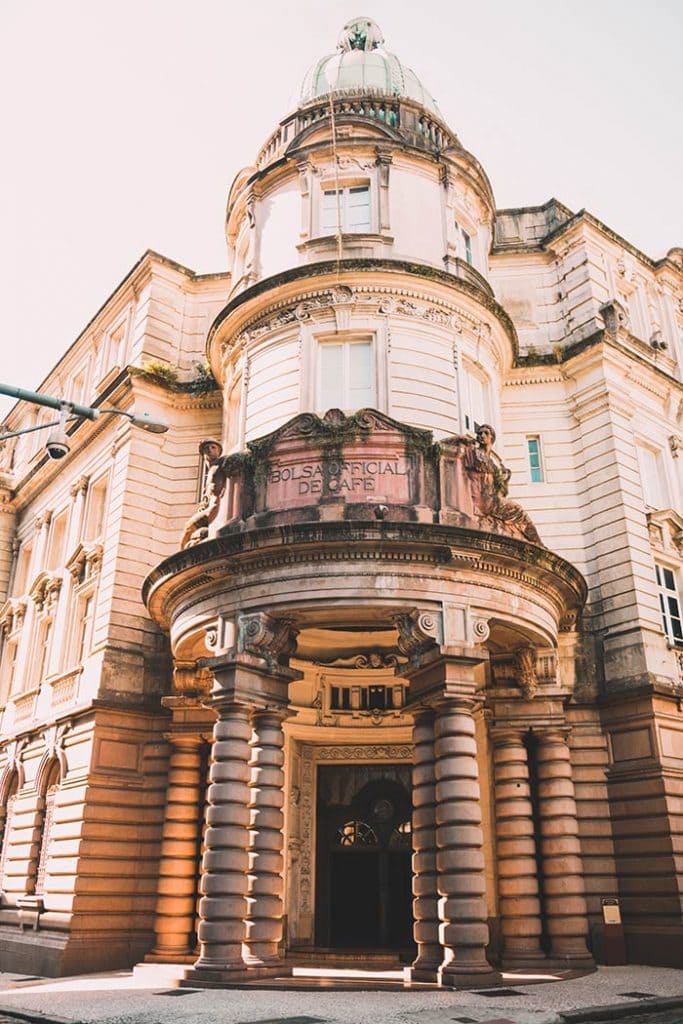
Brazil facts: The country has been the largest producer of coffee for the last 150 years
Fun facts about Brazil
Portuguese is the official language in Brazil
Unlike popular belief, we Brazilians speak Portuguese.
In fact, Brazil is the only country in South America that speaks Portuguese. And besides Guyana, French Guiana, and Suriname, all other countries speak Spanish.
That’s one of those Brazil fun facts I love sharing with people because when I meet people abroad, they always start speaking Spanish with me. When I say I don’t speak Spanish, they ask me, “but aren’t you Brazilian?”
Brazil was a Portuguese colony for 322 years
After the last fun fact about Brazil, this one probably doesn’t come as a surprise anymore.
The Portuguese arrived in Brazil in 1500 and kept the country one of their colonies for 322 years. They stayed until 1822 when locals fought for independence and won on September 7.
The name Brazil comes from a tree named Brazilwood
This is one of my favorite quick facts about Brazil.
Back in the day, when the Portuguese arrived in Brazil, the brazilwood tree was everywhere.
It was a considerable export good for them, and because there were so many, they gave its name to the country, Brazil.
Government and politics
The Brazilian Federation is based on the indissoluble association of three autonomous political entities: the states, the municipalities and the Federal District. There is no hierarchy among the political entities. The federation is based on six fundamental principles: sovereignty, citizenship, dignity of the people, the social value of labor, freedom of enterprise, and political pluralism. The classic tripartite division of power, encompassing the executive, legislative, and judiciary branches under the checks and balances system, is formally established by the constitution. The executive and legislative branches are organized independently in all four political entities, while the judiciary is organized only in the federal and state levels.
All members of the executive and legislative branches are elected by direct suffrage. Judges and other judicial authorities are appointed after passing entry exams. Voting is compulsory for those aged 18 or older.
Four political parties stand out among several small ones: Workers’ Party (PT), Brazilian Social Democracy Party (PSDB), Brazilian Democratic Movement Party (PMDB), and Democrats (formerly Liberal Front Party—PFL).
Practically all governmental and administrative functions are exercised by authorities and agencies affiliated with the executive. The form of government is republican and democratic, and the system of government is presidential. The president is head of state and head of government and elected for a four-year term, with the possibility of re-election for a second successive term. The president appoints the ministers of state, who assist in governing. The current president is Luiz Inácio Lula da Silva, who was elected on October 27, 2002, and re-elected on October 29, 2006.
Legislative houses in each political entity are the main source of laws. The National Congress is a bicameral house formed by the House of Representatives and the Federal Senate.
Foreign relations
Brazilian army troops before boarding for MINUSTAH peacekeeping mission in Haiti.
Brazil is a political and economic leader in Latin America. However, social and economic problems prevent it from becoming an effective global power. Between World War II and 1990, both democratic and military governments sought to expand Brazil’s influence in the world by pursuing a state-led industrial policy and an independent foreign policy. More recently, the country has aimed to strengthen ties with other South American countries and engage in multilateral diplomacy through the United Nations and the Organization of American States.
Brazil’s current foreign policy is based on the country’s position as a regional power in Latin America, a leader among developing countries, and an emerging world power. Brazilian foreign policy has generally reflected multilateralism, peaceful dispute settlement, and nonintervention in the affairs of other countries. The Brazilian constitution also states that the country shall seek the economic, political, social, and cultural integration of the nations of Latin America.
Military
The armed forces of Brazil comprise the Brazilian army, the Brazilian navy, and the Brazilian air force. The Military Police is described as an ancillary force of the army but is under the control of each state’s governor. The Brazilian armed forces are the largest in Latin America. The Brazilian air force is the largest air force in Latin America, with about 700 manned aircraft in service. The Brazilian navy is responsible for guarding Brazilian territorial waters. It is the oldest of the Brazilian armed forces and the only navy in Latin America that operates an aircraft carrier. With a strength of approximately 190,000 soldiers, the Brazilian army is responsible for land-based military operations.
Краткая история
Федеративная Республика Бразилия, история которой началась в начале XVI столетии, – это страна, которая многое испытала на своем веку. В 1500 году мореплаватель Кабрал из Португалии открывает европейцам новые земли, на которых обитали индейские племена, а через 30 лет начинается колонизация страны. Сюда прибывают первые переселенцы и основывают ряд феодальных владений (капитании). Вскоре на тростниковых плантациях колонистов появляются рабы из Африки.
В XIX веке принц Жуан из Португалии, спасавшийся от войск Наполеона, провозглашает государство королевством. Через несколько лет его сын, объявивший Бразилию независимой, получает титул императора и отменяет рабство в стране. После свержения его власти, с 1889 года и по настоящее время Бразилия является федеративной республикой. Бывшие провинции, называемые штатами, получили автономию и собственные законодательные органы.
До середины 80-х годов прошлого века года страна находилась под властью авторитарных президентов, и только 30 лет назад начался период демократизации. Принципы государственного устройства действуют и поныне, а в конституцию вносятся новые поправки.
Interesting facts Brazil symbols
São Paulo State’s flag was supposed to be Brazil’s flag
After the country became a republic, people wanted a new flag to represent a new beginning.
Many projects were presented to the authorities at the time. Still, the current flag of São Paulo is one of the best-known rejected projects.
And because of this rejection, the state of São Paulo won a tricolor flag where each color represents the major ethnic groups in Brazil.
The black represents the African slaves who built the country, the white represents the European immigrants, and the red represents the Indigenous people of our lands.
The stars on the Brazilian flag depicts a specific starry night
The starry night on the flag, a national symbol of Brazil, isn’t any ordinary night, but the one of November 15, 1889, as seen from Rio de Janeiro.
On that day, a military coup d’etat established the Republic of Brazil, and an astronomer was asked to draw the sky above their heads and mark that day in history. (And in our flag too.)
The lone star in the flag isn’t the capital, Brasília
Each star on the Brazilian flag represents a state or the capital.
While many people believe the lone star at the top half of the flag is Brasília, the country’s capital, I can tell you that’s a big misconception.
In fact, that star represents Pará, a northern state. At that time, Pará was the northernmost state in Brazil, Amapá and Roraima were created later.
And since each state’s position was chosen according to their location in Brazil, Pará is the lone star.
Климат
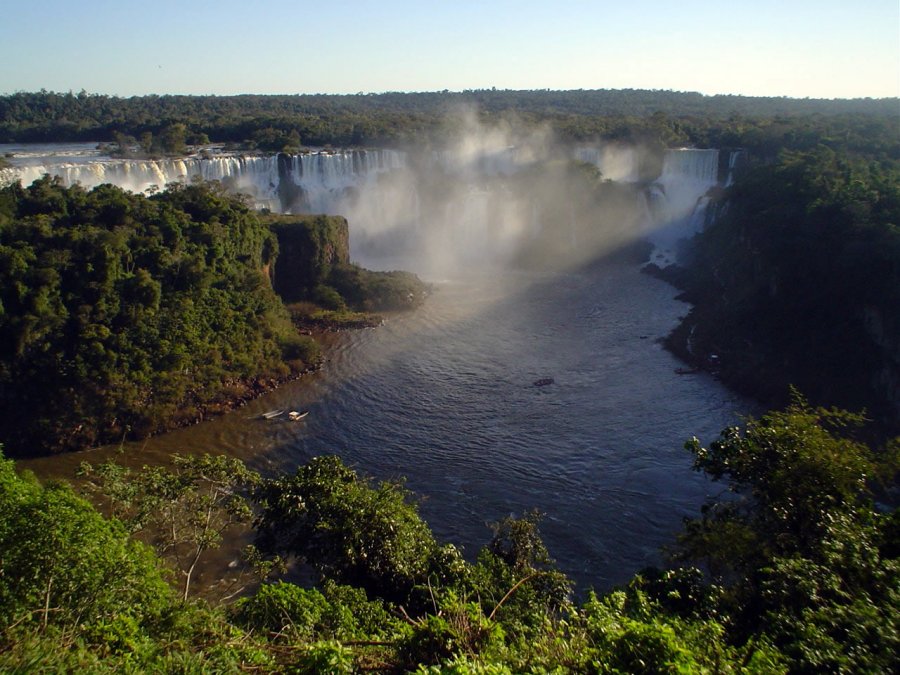
Несмотря на то, что 90% территории страны находятся в тропическом поясе, более 60% населения Бразилии проживает в зоне умеренных температур, формирующихся под воздействием преобладющих высот, дующих со стороны моря ветров и фронтов холодного воздуха.
В Бразилии представлены пять климатических типов: экваториальный, тропический, полузасушливый, тропический высокогорный, и субтропический. Для городов, расположенных на равнинной местности, таких как Сан-Пауло, Бразилиа и Бело-Оризонте, характерны умеренные температуры среднее значение которых составляет + 19 градусов.
#BANNER#
Города Рио-де-Жанейро, Ресифи и Салвадор, расположенные на побережье, характеризуются жарким климатом, который смягчает тропический ветер.
Субтропический климат южных городов, таких как Порто-Алегре и Куритиба, сравним с некоторыми регионами США и Европы, где случаются периодические заморозки. Зимой в этом поясе температура может опускаться ниже нуля.
Несмотря на расхожее мнение о том, что в бассейне Амазонки царит невыносимая жара, температура в этом районе не превышает + 32 градусов, а ее среднегодовое значение составляет + 22-26 градусов при незначительных сезонных колебаниях в самые жаркие и самые холодные месяцы года.
Самый жаркий район Бразилии — это северо-восток. В период засухи, длящийся с мая по ноябрь, температура воздуха на северо-востоке повышается до + 38 градусов. По сравнению с Амазонкой этот район Бразилии характеризуется более резкими сезонными колебаниями температур. Вдоль побережья Атлантического океана от Ресифи до Рио-де-Жанейро средняя температура колеблется от + 23 до + 27 градусов.
На возвышенных территориях в глубине страны температура понижается до + 18-23 градусов. К югу от Рио-де-Жанейро различия между временами года становятся более отчетливыми, а сезонные колебания температур — более ярко выраженными. В этом районе страны среднегодовое значение температур составляет от + 17 до + 19 градусов.
Времена года в Бразилии распределяются следующим образом:
Весна: с 22 сентября по 21 декабря
Лето: с 22 декабря по 21 марта
Осень: с 22 марта по 21 июня
Зима: с 22 июня по 21 сентября
